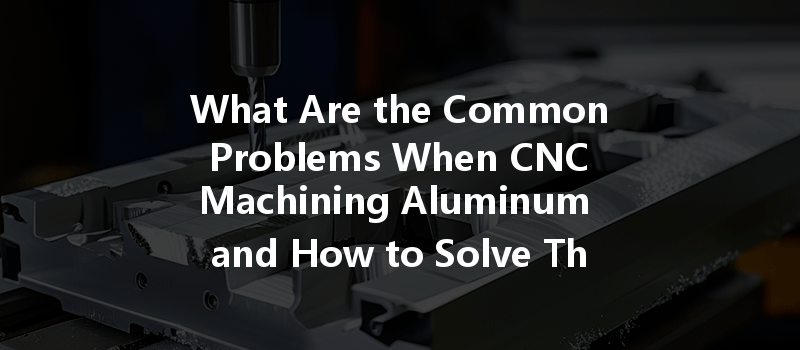Opening
Did you know that aluminum is the second most commonly used metal in the world, following steel? A favorite in various industries, aluminum’s light weight, exceptional corrosion resistance, and versatility make it a prime candidate for CNC machining. However, despite its many benefits, machining aluminum can come with a unique set of challenges that can compromise quality and efficiency. Wouldn’t it be intriguing to delve into these common problems and discover actionable solutions to improve your CNC machining process?
Content
As we embark on this extensive exploration of CNC machining aluminum, we will discuss some common problems encountered during the process, provide detailed explanations of their causes, and offer practical solutions for overcoming these challenges.
Problem: The wear and tear on machining tools is a significant concern when working with aluminum. This can lead to higher costs due to frequent tool replacements and decreased productivity because of prolonged downtime.
Solution: High-speed steel (HSS) tools are commonly used for aluminum. However, switching to carbide tools can significantly extend tool life due to their hardness and durability. Additionally, employing coated tools, such as TiN (titanium nitride) or TiAlN (titanium aluminum nitride), can reduce friction during machining operations.
Problem: Aluminum is prone to deformation during machining, especially when using high cutting forces. This can lead to dimensional inaccuracies and compromised part quality.
Solution: Proper clamping and fixturing techniques are essential to mitigate deformation. Using strategically placed supports and clamps can help keep the part stable during machining.
Problem: Poor chip management can result in chip recycling issues, poor surface finish, and even tool breakage due to packing of chips.
Solution: Effective chip removal starts with an understanding of chip formation in aluminum machining, which tends to produce long, string chips.

Problem: Achieving a desirable surface finish is critical in various applications, and poor finishes can lead to rework or rejection of parts.
Solution: The type of tools and cutting parameters significantly influence the surface finish.
Problem: Aluminum has a high thermal conductivity which can lead to significant thermal expansion during machining, thereby affecting tolerances.
Solution: It’s essential to manage heat during the cutting process.
Problem: Vibration during machining can affect the precision of CNC machining operations and deteriorate the quality of the finished part.
Solution:
In summary, CNC machining aluminum presents an array of challenges including tool wear, material deformation, chip management, surface finish inconsistencies, thermal expansion issues, and tool vibration. Understanding the underlying causes of these problems is crucial for determining the right approach to resolve them effectively.
By investing time in researching tools, techniques, and technologies to counter these issues, manufacturers can boost productivity, enhance part quality, and ultimately reduce costs. Navigating these hurdles successfully not only impacts your operational efficiency but also influences customer satisfaction and retention.
Therefore, understanding the intricacies of CNC machining aluminum cannot be overstated. These insights into common problems and their solutions serve as valuable knowledge for anyone engaged in the manufacturing sector. Share your thoughts and experiences below, and let’s further discuss how we can collectively elevate CNC machining processes for aluminum and beyond!
Related Posts
- What is the difference in machining difficulty between 2205 duplex stainless steel and 304 stainless steel in CNC processing?
- How Does Material Hardness Affect CNC Machining Performance for Aluminum and Steel?
- How Can CNC Machining Support Quality Certification Audits for Enhanced Manufacturing Reliability?



